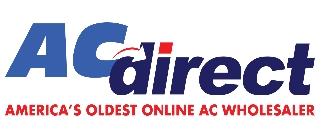Should I Replace My 25-Year-Old AC Unit?
-
 By
Michael Haines
By
Michael Haines
- Jul 4, 2025

Hi, I'm Michael Haines. Let’s start with the basics. Most air conditioners last between 12 and 20 years. That’s with proper maintenance, normal usage, and no major breakdowns. If yours is 25 years old and still running, it’s already outlived its expected lifespan by at least five years.
That might sound like a win, but let me put it this way: driving a 1998 pickup truck might still get you to work, but you’re not winning any awards for fuel economy. The same thing is true with HVAC systems. Just because it turns on doesn’t mean it’s working efficiently — or safely.
How Long Should an Air Conditioner Actually Last?
By the time your system hits the 20- to 25-year mark, you’re dealing with outdated refrigerants, reduced airflow, worn-out motors, failing capacitors, and compressors that are living on borrowed time.
And here’s the kicker: many of these older units are running at SEER ratings of 8 to 10. That’s like buying groceries and paying double for the same amount of food. Today’s systems, especially high-efficiency models we sell, start at SEER2 ratings of 14.3 and go all the way up to 20-plus. The difference on your electric bill? Big.
What Does It Really Cost to Keep an Old AC Running?
You might think you’re saving money by holding onto that old unit, but let’s add it up.
A 25-year-old unit is likely costing you at least 30% more each month on electricity compared to a modern unit. If your summer bill is $250, that’s about $75 going straight into the trash every 30 days. Multiply that across a five-month cooling season, and you’re over $350 a year in wasted power.
That doesn’t include the cost of repairs. Once your system hits 20 years, parts start failing more frequently. That capacitor your tech replaced last summer? Get ready to replace it again. Blower motor making a weird noise? Probably not going away on its own. Compressor starting to short cycle? That's a four-figure repair — if you can even find the part.
At that point, you’re not maintaining your AC. You’re financing its retirement.
Key Takeaways
-
Air conditioners last 12 to 20 years on average — 25 is well past due
-
Older systems run at much lower SEER ratings, which means higher utility bills
-
Constant repairs, refrigerant shortages, and efficiency loss add up quickly
-
Replacing your system now could save you hundreds every year on electricity alone
The smarter move? Invest in one of our high-performance systems and see the savings add up fast. We’ve got the most efficient central air conditioning systems available to homeowners — shipped direct, without the markup.
Why a 20-Year-Old HVAC System Isn’t Worth Keeping
Let’s talk about HVAC systems that are “only” 20 years old. That might sound better than 25, but the same problems apply. Systems from that era weren’t built with the technology we have now. They used different refrigerants, relied on single-stage operation, and often had basic mechanical thermostats that weren’t very precise.
Even if your 20-year-old HVAC system is working, it’s almost guaranteed to be costing you more in monthly bills than it should.
Modern systems are equipped with ECM (electronically commutated) blower motors that adjust airflow as needed. They reduce energy use and help your air handler operate more quietly. Variable-speed compressors give you even more comfort by running longer at lower power.
If your system is older, it probably runs full blast every time it turns on. That causes more wear and tear and doesn’t do a great job of managing humidity. That’s why homes with old ACs often feel sticky, even when the temperature is technically “cool.”
And let’s not forget warranties. New systems come with 10-year coverage. That’s peace of mind you’re not getting from a rusted-out condenser that's been patched up three times already.
Will a New AC Unit Really Lower My Electric Bill?
Yes. And not just by a little. Upgrading from an old 10 SEER system to a modern SEER2 16+ unit can cut your cooling costs by 30 to 40 percent.
That’s not marketing fluff. That’s what happens when you install equipment that doesn’t have to fight to keep up. With a properly sized, high-efficiency system, you get steady cooling at lower power levels, less cycling, and fewer temperature swings.
Want the bonus round? High-SEER2 systems often qualify for rebates from utility companies or even federal tax credits. Depending on your state and local programs, you could save hundreds right out of the gate.
And if you’re still using an analog thermostat, upgrading to a programmable or Wi-Fi model adds even more savings. Those small upgrades make a big impact on usage, especially if you’re gone during the day or asleep at night.
Why It Costs So Much to Run Your Old HVAC System
Let’s break it down. If your HVAC system is running up your power bill, there’s usually more than one culprit.
First, you’ve got inefficiency. Old systems use more energy for the same amount of cooling. Every time that compressor kicks on, it pulls more electricity than it should.
Next, there’s duct leakage. If your ducts haven’t been inspected or sealed in a decade, you could be losing 20% to 30% of your cool air into your attic or crawl space. That’s air you’re paying to condition — and never even feeling.
Then there’s poor insulation. Older homes often lack adequate ceiling and wall insulation. Combine that with old windows and you’ve got an uphill battle for any AC system, especially an aging one.
And finally, maintenance neglect. Dirty filters, clogged coils, blocked vents — all of these make your system work harder. Over time, they lead to reduced airflow, compressor strain, and higher utility bills.
Upgrading your system won’t fix all of those, but it’s a huge first step. And when you order through AC Direct, you’re not just getting better equipment. You’re getting smarter design, higher performance, and wholesale-level pricing.
Why SEER2 Ratings Matter in 2025
In 2023, the industry shifted from SEER to SEER2 to reflect more realistic operating conditions. SEER2 ratings are tougher, but more accurate. That means a 14.3 SEER2 system today is performing better than a 14 SEER system ever did on paper.
The goal of SEER2 is to account for things like system pressure drop, duct layout, and static resistance. In short, it measures how your system really works in your home — not just in a lab.
Systems rated SEER2 16 and higher are considered energy-efficient under the 2025 standards. If you’re using a 20-year-old 10 SEER unit, it’s operating at roughly 50% of the efficiency of today’s systems. Imagine burning through $200 a month when you could be paying $120 or less.
That’s the power of choosing the right upgrade.
What Else You Gain from Replacing Your System
Lower bills are just the beginning. New systems bring quieter operation, better humidity control, smarter thermostats, and longer warranties. Your comfort improves dramatically — and so does your peace of mind.
You’ll also boost your home’s resale value. If you’re planning to sell in the next 3 to 5 years, buyers will see a new HVAC system as a major bonus. It’s one less thing for them to worry about and a sign the home has been well cared for.
And if you’re staying put? You get to enjoy all the benefits without constantly checking the thermostat or wondering if your AC will survive another summer.
Who Should Replace Their System This Year?
If your system is more than 20 years old, the answer is easy. Yes, it’s time. If it’s between 15 and 20 and you’re already noticing issues — hot spots, long runtimes, rising energy bills — now is also a good time to upgrade.
But don’t wait until the unit fails completely. Emergency replacements are always more expensive and stressful. And in peak summer, HVAC techs are booked weeks out.
By planning ahead, you can shop on your schedule, compare options, and get the best deals. Especially if you take advantage of AC Direct’s promotions, financing, and bundled system pricing.
Final Thoughts
Keeping a 25-year-old AC unit running might seem like a money-saving move, but the numbers don’t lie. Between high electric bills, constant repairs, and performance issues, that old system is costing you far more than you think.
New high-efficiency systems are quieter, smarter, and easier on your wallet. And when you order direct from us, you skip the middleman markup and still get full warranty coverage, free shipping on most systems, and support every step of the way.
Don’t wait for your old system to leave you sweating. Replace it now with a better solution from AC Direct.
FAQ
Should I replace my 25-year-old AC unit?
Yes. Most AC systems are only designed to last 12 to 20 years. A 25-year-old unit is long overdue for replacement and is likely wasting energy and money.
Should I replace my 20-year-old HVAC system?
Yes. Even if it’s still running, it’s likely inefficient and nearing the end of its useful life. Upgrading will save you money and improve comfort.
Will a new AC unit lower my electric bill?
Yes. Replacing a 10 SEER system with a 16 SEER2 model can reduce cooling costs by 30 to 40 percent.
Why does my HVAC cost so much to run?
Older systems use more electricity and are often paired with poor insulation or leaky ducts. Dirty filters and aging parts also raise energy use significantly.
When is the best time to replace my AC?
Before it breaks down. Spring and early fall are ideal. You avoid emergency service charges and get access to better pricing and scheduling.

 and now, NASCAR Racing Sponsor
and now, NASCAR Racing Sponsor









